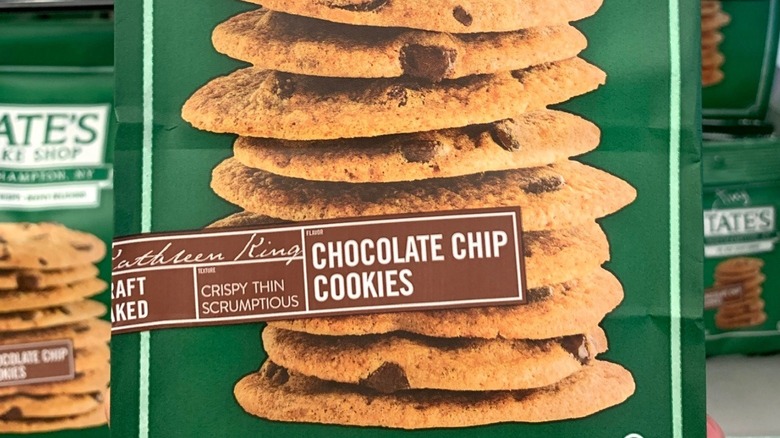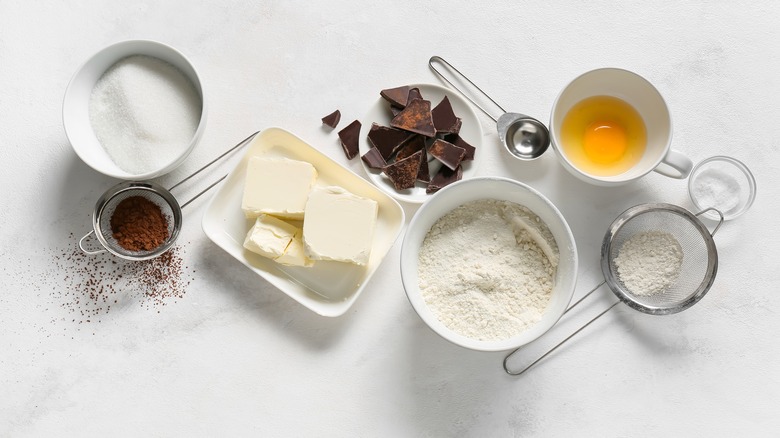Reverse Creaming Is The Secret To Tate's Copycat Chocolate Chip Cookies
Chocolate chip cookies are a classic for a reason, and it's always a good idea to have a chocolate chip cookie recipe for times you want to whip up a quick, simple dessert. There are so many variations you can try, and you can even play around with the texture of your cookies. For example, a bakery-style chocolate chip cookie recipe will lead to a fluffier and softer cookie, but some people prefer a thin cookie with crispy edges.
When it comes to crispy cookies you can buy in a grocery store, Tate's Bake Shop is one of the most popular brands out there. According to a 2011 Consumer Reports survey, taste testers declared that out of 18 store-bought cookies, Tate's cookies came out on top. Since then, people have continued to rave about the company's chocolate chip cookies. For example, in a Reddit post, one person commented, "Best chocolate chip cookie I've ever had, and I'm usually a soft cookie kind of gal!"
If you've tried to make Tate's chocolate chip cookies at home, you might have found it difficult to replicate that signature crunch. If you haven't succeeded yet, don't give up — Justine Doiron of Justine Snacks explains that reverse creaming your ingredients is key to getting the perfect Tate's chocolate chip cookie replica.
What difference does reverse creaming make in cookies?
Reverse creaming isn't typically a technique used for baking cookies. In fact, King Arthur Flour explains that reverse creaming originated with cakes, and the method became popular after "The Cake Bible" by Rose Levy Beranbaum was published in 1988. While the typical creaming method means butter and sugar are mixed together first, the reverse creaming method mixes butter with flour and the dry ingredients first. This quick switch will change the way you make cake and result in a more moist and delicious bite.
But what does reverse creaming do for cookies? According to Justine Doiron of Justine Snacks, when you use the regular old creaming method, you allow the butter to aerate. This hydrates the dough, leading it to rise. So when you reverse cream and mix in the butter after the dry ingredients, there's less time for aeration, leading to a crispier and thin cookie. If you do pull out your cookies and they seem thicker, don't worry. Doiron explains that as these cookies cool, they'll flatten out to mimic Tate's chocolate chip cookies.
Now that you know the reverse creaming technique, making copycat Tate's chocolate chip cookies and other thin and crunchy cookies should be a breeze. But if you decide you'd rather stick to store-bought, Costco shoppers claim that Kirkland's chocolate chip cookies might even be better than the ones from Tate's, and have the same texture and crunch.

